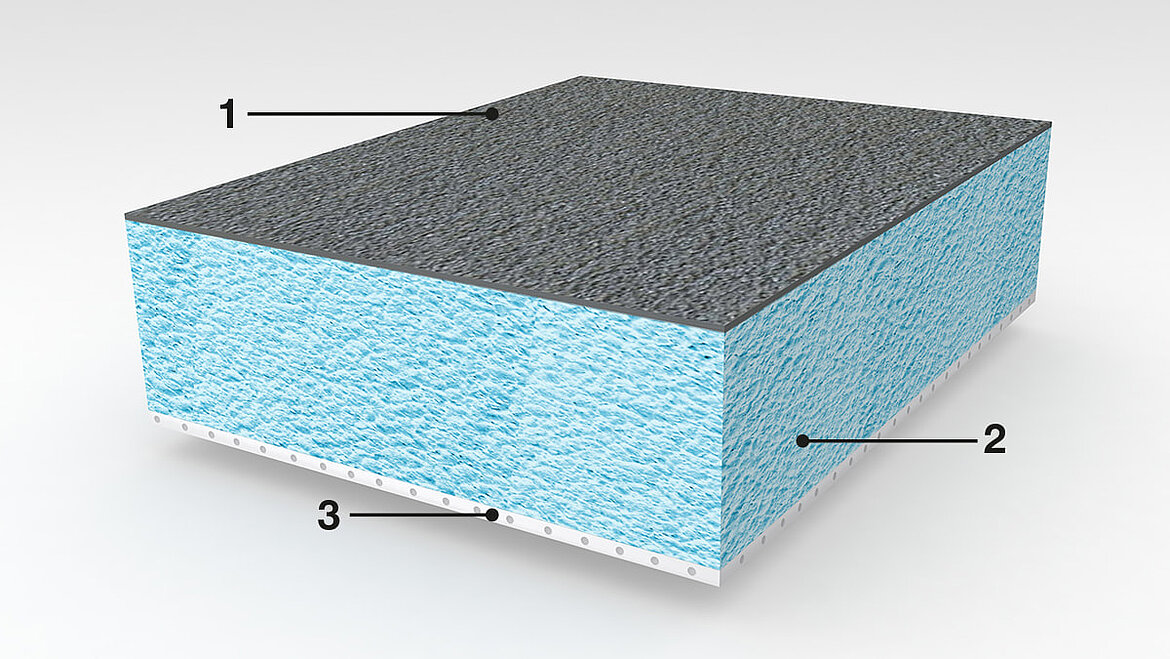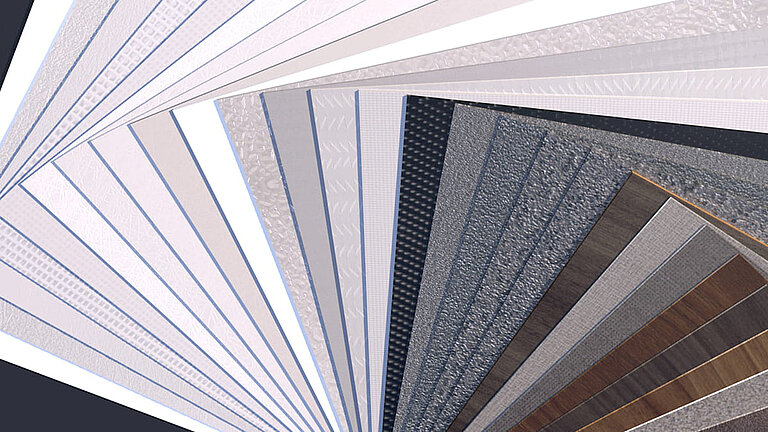Fibre composites in sandwich constructions
LAMILUX Composites
Thanks to the composition of reinforcement materials such as glass fibres and a plastic matrix, glass fibre-reinforced plastics (GRP) can be used in a wide variety of areas. In addition to the caravan, commercial vehicle and bus industry, the fibre composite materials are also popular in construction and in medical and food technology. The same goes for the sports industry and for different types of containers. Due to its high resistance, easy cleanability and good heat-insulating values, GRP is the innovative material in many industries. Fibre composites have impressive longevity, low weight and weathering and hail resistance. They are also electrically insulating, easy to process and resistant to heat and humidity. GRP materials also score highly with their appearance in a wide range of application areas. Thanks to all these advantages and the possibilities for further processing, GRP is already replacing many traditional materials such as wood, steel or aluminium in a wide range of applications.
Sandwich constructions made of GRP
Glass fibre-reinforced plastics (GRP) are robust, light and versatile. If sandwich panels are produced with GRP sheets, the load-bearing capacity increases significantly. The typical structure of a sandwich panel follows the sequence of GRP face sheet / core material / GRP face sheet. The two outer, solid face sheets are separated by the core material and are permanently connected to one another. Typical core materials of GRP sandwich elements are EPS, XPS, PET, PU, PVC foam cores or PP honeycomb materials. In principle, either sheets, (plywood) or fibre composites can be used for the face sheets.
The combination of the three layers offers both a high load-bearing capacity and great stiffness. Sandwich panels also impress with excellent heat insulation in building envelopes, for example, and can withstand high tensile and compressive forces.
Advantages of sandwich construction
- Distributed loads can be absorbed better
- High resistance to bending and buckling
- Low weight with high strength
- Good thermal insulation properties
- Good sound insulation properties
- High tensile strength
- Attractive appearance
1 - Upper GRP face sheet
2 - Core material
3 - Bottom GRP face sheet
Areas of application of sandwich constructions
Sandwich panels are characterised by their very high load-bearing capacity, excellent robustness and optimum heat insulation. Due to these and many other outstanding qualities, sandwich constructions are used in a wide variety of applications. Sandwich panels are installed primarily in roof and wall areas of different buildings due to their quick and easy installation. Industrial, office and administrative buildings, as well as cold storage facilities, are equipped with sandwich panels. Sandwich constructions are also often used in vehicle construction. Here, they are primarily used for exterior walls, flooring and the roof with thermal insulation for motor homes or refrigerated box bodies in commercial vehicles. GRP sandwich constructions are primarily used in shipbuilding for sports boats. The sandwich panels in large ship building offer a high level of safety, especially for tankers. Sandwich panels are also increasingly being installed in aircraft. The material is used for the walls of the galley kitchens or toilets.
LAMILUX Composites sandwich panel configurator
Request an individual trial now!
The LAMILUX Composites sandwich panel configurator enables various sandwich simulations to be implemented and then analysed. To do this, the following steps must be followed. First, the desired GRP material should be determined. Five LAMILUX Composites are available for this purpose: Super Plus 1.5 mm, Super Plus 2.0 mm, High Strength Xtreme 1.4 mm, Woven Roving Xtreme 1.4 mm, Woven Roving 1.5 mm. The five fibre composites are distinguished above all by their versatility, which is why they are used in all typical applications.
Next, the core material and core thickness must be determined. The final point is the selection of the test implementation on the basis of DIN EN ISO 178 or DIN EN ISO 14125. There are three different tests to choose from. In the 3-point bending test, the test specimen, i.e. the GRP sandwich construction, is positioned on two supports and loaded in the centre with a testing stamp. In the 4-point bending test, on the other hand, the test specimen is also positioned on two supports with the GRP sandwich construction and loaded in the centre with a testing stamp with two pressure points. The last test is the compression die test. In this test, the GRP sandwich construction is tested on four sides to determine the necessary force for its destruction.
Our configurator helps you to decide on the right GRP material and simplifies selection of the right solution for your individual application, so that you can implement it safely and easily.
Create your test configuration as follows:
Step 1: For this purpose, select the appropriate GRP materials for the upper and lower face sheet.
Step 2: Select the core material.
Step 3: Select the core thickness.
Step 4: Select the type of test.
Step 5: Add another test or exit configuration.
For comparison purposes, up to three superstructures can be combined into one request. Since all enquiries are individually set up, implemented and evaluated by our GRP experts, we will send the results of the simulations within the next few days.
Stiffness
Due to the maximum possible quantity of around 50 % vol. of reinforcement fibres, aligned optimally to suit the specific application, Lamilux X-treme materials achieve extremely high rigidity.
Impact resistance
The very resilient epoxy resin matrix and outstandingly well embedded reinforcement fibres produce a material with astonishingly high impact resistance. This prevents material damage in many cases and significantly increases the service life.
lightweight construction
The excellent strength of the material means that its thickness can be significantly reduced and weight can be saved without any reduction in stability.
Further information on GRP sheets
LAMILUX Composites




